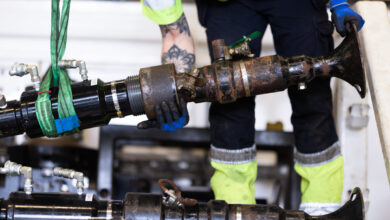Alternative safety pyramid allows ExxonMobil to focus on low-probability, high-consequence events
By Linda Hsieh, Managing Editor
A shift in strategy toward safety was implemented at ExxonMobil when the company realized that it wasn’t giving enough focus to the critical events that have a combination of low probability and high consequence. “We’ve done a really good job at reducing overall injury rates, but we also noticed that our incident rates were still not at zero. We’re still not at the bottom point,” Paul Schuberth, Upstream Safety, Security, Health and Environment Manager for ExxonMobil, said at the 2016 IADC Drilling HSET Europe Conference in Amsterdam on 22 September. “More importantly, the life-altering events and fatalities were still occurring.”
The shift began with what ExxonMobil has dubbed the “hurt-free approach” to personnel safety. It veers away from the traditional industry approach of classifying actual incidents based on the medical treatment provided – LTI (lost-time incident), RWI (restricted work incident), MTI (medical treatment incident) or FA (first aid). “What we’re doing is we’re looking toward behavior-based safety leadership, based on the fundamental beliefs that all injuries are preventable and that all safety incidents, including near-misses, need to be assessed for both actual and potential consequences,” Mr Schuberth said.
The hurt-free approach was initially launched within ExxonMobil’s drilling segment, then was formally adopted by the entire upstream unit in 2012. “We are now today rolling this out to downstream and chemicals to have a consistent hurt-based approach across the entire corporation,” he said.
Instead of using the traditional safety pyramid that is based on treatment-based classifications, the company created what it calls the yellow pyramid. It is based on six levels of “hurt” – an easy concept to understand across all cultures regardless of language. Level 0 is no hurt and includes near-misses. Level 1 is a minor hurt, such as a minor cut or bruise. Level 2 is moderate hurt, such as a bone fracture or significant laceration. “Then we have what we call higher-level hurts,” Mr Schuberth explained. Level 3 is severe hurt, which includes long-term or life-altering events, such as amputations or loss of vision. The top two levels are fatality and then multiple fatalities.
This new pyramid is now enabling ExxonMobil to focus on all incidents that have a potential for a hurt level of three or higher – called PHL3 diamond events. For example, if objects were dropped from the derrick and the area below had not been cleared or roped off, the outcome is usually a near-miss. But it could also result in a life-altering injury or even fatality. “We’re trying to better understand these high-consequence, high-potential events in an effort to drive down the high-severity incidents,” he said. ExxonMobil calls this approach “mining the diamond.”
Mr Schuberth emphasized that the yellow pyramid incorporates near-misses into its hurt-level reporting. “I believe there’s real value in near-misses. They’re leading indicators. I call them gifts. I call them free learning opportunities, and we need to take advantage of them.” Just like actual safety incidents, these near-miss diamond events must be identified early on because they can ultimately result in a future life-altering injury or fatality.
“The other piece is that when we identify these near-misses, we also have to take corrective action as soon as possible because those unresolved near-misses oftentimes have the highest potential of reoccurring,” Mr Schuberth said. “As we identify near-misses, we need to also take actions to correct behaviors. If you’re quick and effective at mitigating those near-misses, you start to build that trusted culture at the work site.”




